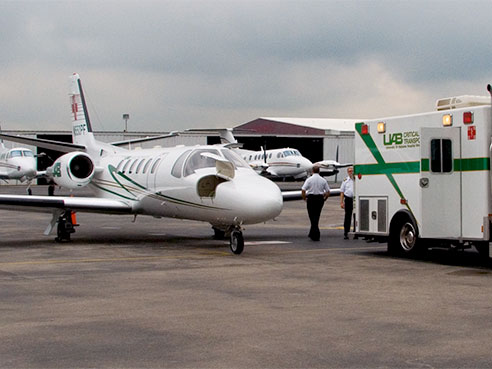 Written by Christy Roach
Written by Christy Roach
UAB’s Critical Care Transport program was reaccredited by the Commission on Accreditation of Medical Transport Systems, a peer-review organization dedicated to improving patient care and safety.
The commission sends site surveyors for two-day visits every three years to interview key CCT staff members, pilots and drivers. The team inspects all vehicles and jets to confirm they are functioning properly and adequately stocked, while taking a general assessment of the program. The latest visit marked CCT’s sixth successful accreditation.
“CAMTS accreditation is an important element in the program’s overall quality and safety compliance efforts,” said Laura Lee Demmons, CCT director. “We want to measure ourselves on the benchmark and see how we can improve.”
CAMTS provides a list of strengths and weaknesses after its visit. Among the strengths of the UAB CCT are a strong quality-improvement program with demonstrated results, advanced certifications among respiratory therapists and annual simulator training for pilots.
| Among the strengths of the UAB CCT are a strong quality-improvement program with demonstrated results, advanced certifications among respiratory therapists and annual simulator training for pilots. |
UAB’s CCT program has been providing local, national and international patient transport services for more than 30 years. It has transported more than 42,000 patients using both jet aircraft and mobile intensive-care vehicles. CCT is one of four accredited services in Alabama and the only accredited critical-care ground service in the state.
“CCT is an outstanding patient-oriented service that extends the reach of UAB’s extremely talented physicians and providers,” said Kevin Barlotta, M.D., CCT medical director.
CCT has been featured in the past four of five CAMTS Best Practices publications. The program also has stepped up its leadership in the community, with its personnel serving in the roles of CAMTS site surveyor, consultant and chair of the CAMTS Standards Committee.